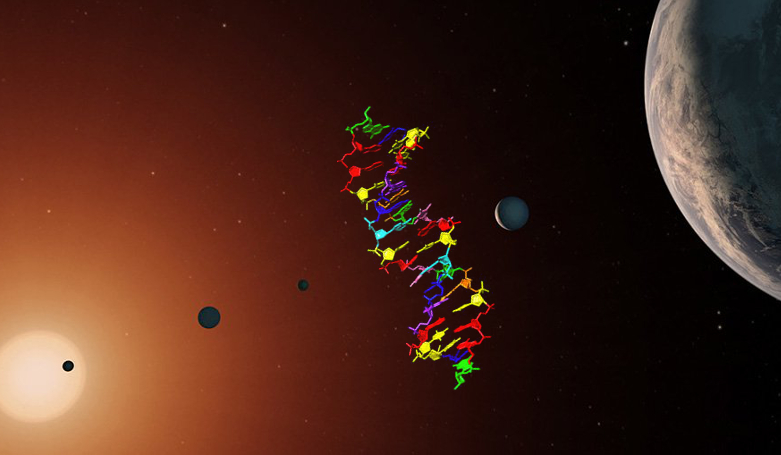When scientists finally get to sample alien life, what will they see? Will their genetic structure mimic ours or will it be wildly different? How different can DNA be? It turns out that the familiar DNA double helix structure that is essential for life on this planet could be bigger with more crammed in.
DNA stands for deoxyribonucleic acid. It is a chemical made up of two long molecules, arranged in a spiral and it carries all the instructions that a living organism needs to grow, reproduce and function.
This microscopic ‘book’ of life is tucked away in the nucleus of every cell and it carries the genetic information that makes someone who they are (genes are short sections of DNA). By ’reading' the DNA code, a cell knows how to make proteins that it can use to perform various functions necessary for life.
DNA as we know it consists of four key ingredients called nucleotides; guanine, adenine, thymine and cytosine – these are the most basic subunits of DNA and they are often abbreviated by their first letter; G, A, T and C. This fixed alphabet limits the size of the terrestrial book of life.
Is it possible to make this book bigger and stuff in more letters? Well apparently, yes it is. In a research breakthrough funded by NASA, scientists have synthesised a molecular system that, like DNA, can store and transmit information but instead of four information carriers, they have squeezed in eight.
Dubbed "hachimoji" DNA (from the Japanese "hachi," meaning "eight," and "moji," meaning "letter”), a team of US based researchers, have tested their ‘alien’ DNA and discovered that it not only reproduced the molecular recognition behavior of standard 4-letter DNA but it also met the Schrodinger requirements for a Darwinian system of molecular evolution – a hallmark for supporting life.
The synthetic hachimoji includes the four G, A, T and C nucleotides but also four others that mimic the structures of the informational ingredients found in regular DNA.
Although now at double capacity, even more could be packed in this expanded genetic code system so that it might work with larger, more complex molecular structures. And, while it may be useful for future synthetic biological applications, the work could also prove useful in exploring how ‘alien’ complex molecules essential for life might arrange themselves.
“By carefully analysing the roles of shape, size and structure in hachimoji DNA, this work expands our understanding of the types of molecules that might store information in extraterrestrial life on alien worlds,” said Steven Benner a researcher at the Foundation for Applied Molecular Evolution in Alachua, Florida, who worked on the project.
Could those alien worlds be as ‘close’ as Europa and Enceladus, where vast water oceans churn under thick layers of ice, thus providing a habitat suitable for life to flourish? Who knows, but NASA and other major space agencies around the world are developing missions to go and find out.
“Incorporating a broader understanding of what is possible in our instrument design and mission concepts will result in a more inclusive and, therefore, more effective search for life beyond Earth,” said Mary Voytek, senior scientist for Astrobiology at NASA Headquarters.
The research is a major contribution in its own right in understanding the fundamental role that information plays in both physics and biology, said Andrew Serazin, president of Templeton World Charity Foundation in Nassau, The Bahamas, which also supported this work. And he’s not wrong.
“The discovery that DNA with eight nucleotide letters is suitable for storing and transmitting information is a breakthrough in our knowledge of the range of possibilities necessary for life.”











